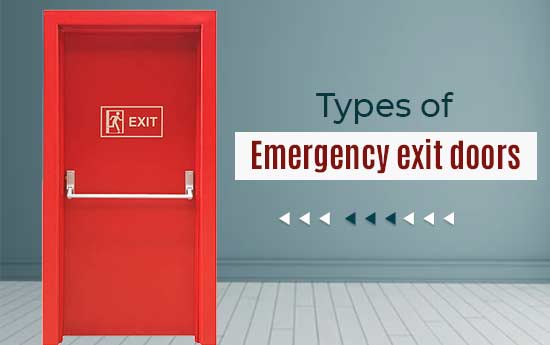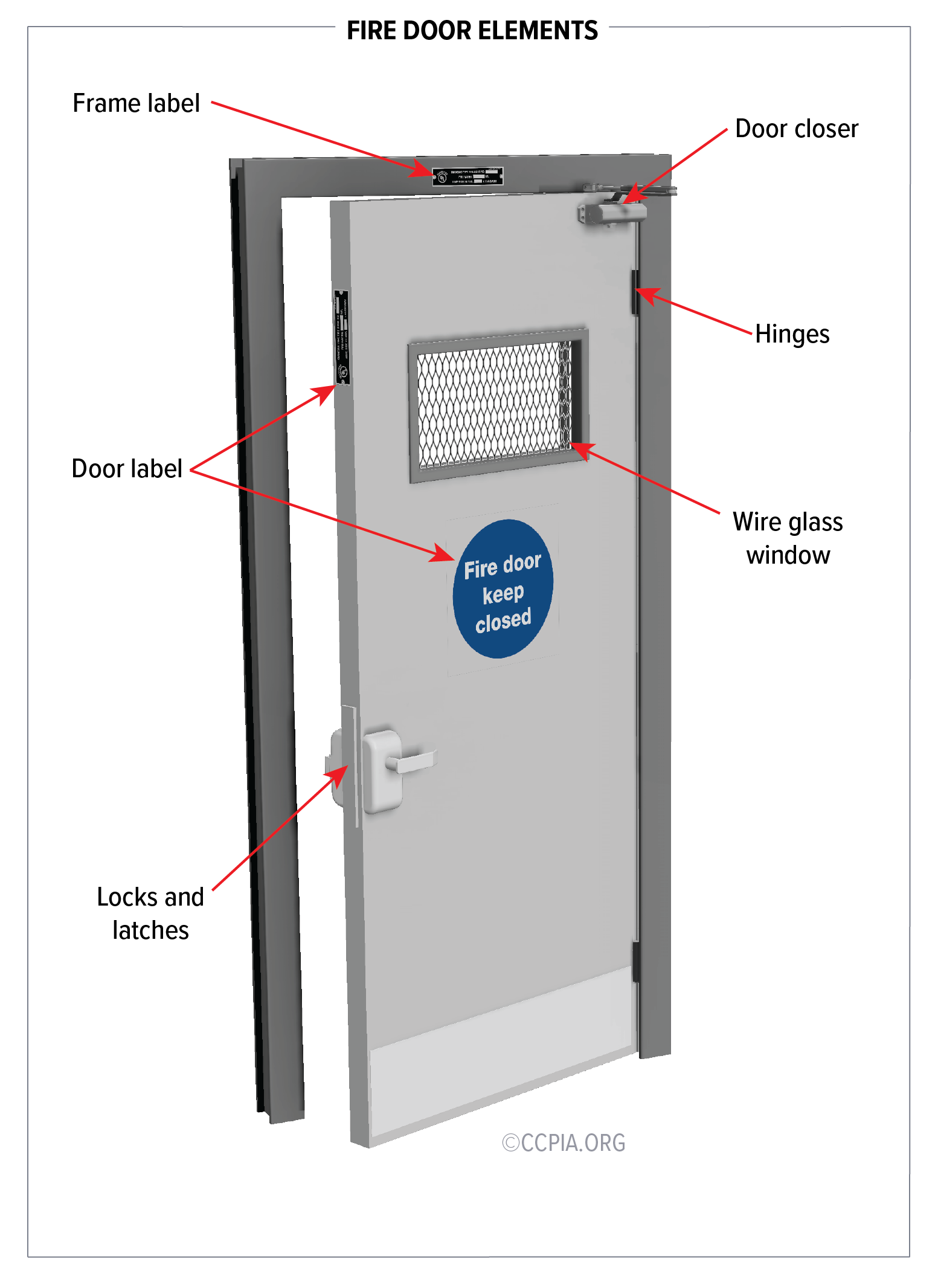The Significance of Fire Doors for Making Certain Optimum Building Safety
The Significance of Fire Doors for Making Certain Optimum Building Safety
Blog Article
Recognizing the Different Sorts Of Fire Doors for Improved Safety And Security
From conventional fire-rated doors that secure versus flames to acoustic fire doors that provide both fire resistance and sound insulation, each kind is designed with particular features in mind. The combination of glass fire doors and the need of fire leave doors further highlight the complex nature of fire door applications.
Criterion Fire-Rated Doors
Basic fire-rated doors are a vital element in guaranteeing structure safety and security and conformity with fire guidelines. These doors are specifically made to stand up to the spread of fire and smoke, offering important defense to passengers and property. Created from products such as steel, plaster, and fireproof timber, they can stand up to high temperatures and maintain structural stability for varying periods, normally ranging from 20 mins to three hours.
The efficiency of typical fire-rated doors is quantified by their fire-resistance rating, which is identified via rigorous screening under controlled problems. This score shows the duration throughout which the door can consist of fires and warmth, therefore permitting extra time for discharge and emergency situation reaction. Additionally, these doors frequently feature intumescent seals that expand when exposed to warmth, further protecting against the flow of smoke and poisonous gases.
Setup of basic fire-rated doors have to adhere to strict building codes and requirements, such as those established by the National Fire Protection Organization (NFPA) and the International Building Regulations (IBC) Regular inspections and upkeep are vital to make certain that these doors work appropriately in an emergency. Effectively set up and kept fire-rated doors are vital in boosting general building security and decreasing fire-related risks.
Smoke Doors
Smoke doors play a pivotal duty in fire security by particularly dealing with the control of smoke, which is typically a lot more hazardous than flames throughout a fire occurrence. Smoke breathing can bring about serious breathing issues, disorientation, and also fatalities, making smoke doors a crucial part in emergency preparation. These doors are created to restrict the movement of smoke between various areas within a building, consequently offering much safer emptying courses and minimizing possible damages to residential property.

In addition, smoke doors are usually furnished with automatic closing mechanisms, triggered by smoke alarm or smoke alarm, to guarantee they close quickly throughout an emergency. By having smoke, these doors assist preserve lower temperatures and more clear visibility in retreat routes, making them a vital aspect in extensive fire safety techniques. Their proper installation and maintenance are important to make sure optimum efficiency when most needed.
Acoustic Fire Doors
Acoustic fire doors give a double function in both fire security and audio depletion, making them an important enhancement to buildings where noise control is important. These doors are crafted to not only fulfill rigorous fire resistance criteria yet also to dramatically lower audio transmission, consequently improving general building efficiency.
The building and construction of acoustic fire doors usually includes a combination of thick materials and specialized seals. These components interact to create an effective barrier versus both fire and sound. High-density cores, such as mineral boards or composite products, are frequently used in the door fallen leave to maximize audio insulation. In addition, the door frame and seals are created to preserve acoustic honesty while using robust fire resistance.
Acoustic fire doors are specifically advantageous in settings where personal privacy and peaceful are paramount, such as healthcare facilities, hotels, and educational institutions. They aid to maintain a peaceful ambience by minimizing the transmission of sound in between spaces or corridors while ensuring compliance with fire safety policies. In addition to their functional advantages, these doors can be tailored to mix effortlessly with the building appearances of a structure, making sure that safety and security does not come at the expenditure of design.

Glass Fire Doors
Glass fire doors, often utilized in modern-day architectural designs, provide a blend of openness and safety and security that traditional fire doors can not match. These doors incorporate the visual allure of glass with necessary fireproof homes, making them an ideal option for modern buildings. Engineered with specialized fireproof glazing, glass fire doors can endure high temperature levels and prevent the spread of flames and smoke for a specified duration, normally ranging from 30 to 120 mins.
The construction of glass fire doors entails multiple layers of tempered glass, frequently treated with intumescent materials that broaden when revealed to warm, more improving their fireproof abilities. These doors are not only useful in regards to fire security however additionally enable all-natural light to permeate through areas, adding to energy efficiency and an extra inviting environment.
Furthermore, glass fire doors can be incorporated with various framing materials such as steel or aluminum, which give extra architectural support and durability. Using such doors is particularly beneficial in industrial, educational, and medical care settings where visibility and safety are vital. By meeting stringent fire safety and security guidelines and preserving an open, contemporary visual, glass fire doors represent a critical advancement in fire-resistant building and construction.

Fire Escape Doors
Fire escape doors are an important part of any type of building's security facilities, made to supply a swift and secure ways of egress during emergencies. These doors are tactically situated to ensure occupants can promptly and securely evacuate the facilities in the occasion of a fire or various other dangerous scenarios. Unlike conventional doors, fire escape doors have to abide by rigorous governing standards, guaranteeing they can do reliably under discomfort.
A vital attribute of fire departure doors is their capability to open up quickly from the within, generally furnished with panic bars or push pads. This layout promotes quick evacuation and check it out protects against bottlenecks that can take place during high-stress circumstances. Furthermore, fire exit doors are often constructed from fireproof products to avoid the spread of fires and smoke, consequently giving crucial added time for discharge and firefighting efforts.
One more essential facet is the clear signage and illumination related to look what i found fire escape doors. Correct signs guarantees that these departures are conveniently recognizable also in low-visibility conditions. Normal maintenance and assessments are essential to ensure that these doors work correctly when needed. Ultimately, the effectiveness of fire exit doors is an essential element in safeguarding lives and reducing residential property damage during emergencies.
Verdict
In summary, recognizing the different types of fire doors, including conventional fire-rated doors, smoke doors, Home Page acoustic fire doors, glass fire doors, and fire exit doors, is necessary for boosting safety and security in buildings. Each type offers specific advantages, from fire and smoke control to sound insulation and aesthetic integration, ensuring detailed defense. Fire doors. Regular upkeep and compliance with safety and security standards are important to ensure their performance in guarding occupants and facilitating secure discharge throughout emergency situations
Report this page